Basford Union, Nottinghamshire
Up to 1834
A parliamentary report of 1777 recorded parish workhouses in operation at Basford (for up to 44 inmates), Beeston (12), Bulwell and Hemshall (16), Bunney (8), and Greasley (30).
Basford was one of several poor law incorporations formed in Nottinghamshire prior to 1834 — others included Gedling (1787), Claypole (1817), East Retford (1818) Thurgarton (1824), Blyth, and Clarborough.
The Basford Incorporation was formed under the terms of Gilbert's Act of 1782 and initially comprised 24 parishes with a further 16 joining by 1834. Most of the member parishes were located in the Broxtowe Hundred and the main source of employment in the area were the lace and hosiery trades whose periodic depressions created widespread unemployment and hardship (Caplan, 1984). In 1815-16, an incorporation workhouse for 240 inmates was erected at on a 24-acre site in Basford at a cost of £8,500. Initially, the inmates made stockings but this seems to have been given up in favour of cultivating vegetables in the workhouse grounds with the surplus produce being sold in Nottingham. In bad weather, the men were employed in stone-breaking. Women were employed in domestic work, and girls were taught needlework. A day-school was also set up for the children.
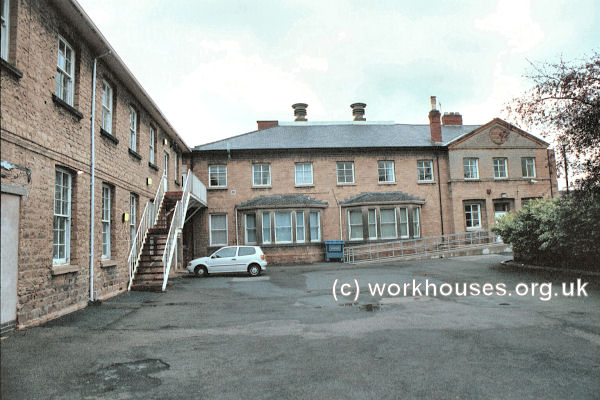
Basford Incorporation workhouse main block from the south-west, 2001.
© Peter Higginbotham.
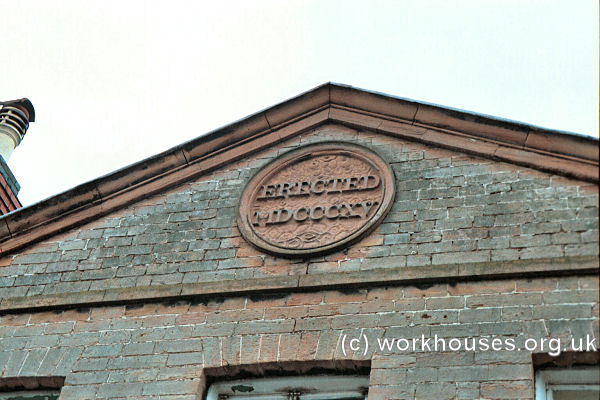
Basford Incorporation workhouse main block (detail), 2001.
© Peter Higginbotham.
In terms of its effects on reducing expenditure on the poor, the Basford workhouse seems to have been highly successful. The number of inmates declined between in the years up to 1834, even though the population had increased and trade had been bad. One member parish, Hucknall, which had paid £600 to join the incorporation, had recouped the cost of its subscription with two years. The operation of Basford workhouse may well have provided a model for the regimes later adopted at Southwell and Thurgarton.
A workhouse once stood on Trowell Moor as indicated by a map of 1881:
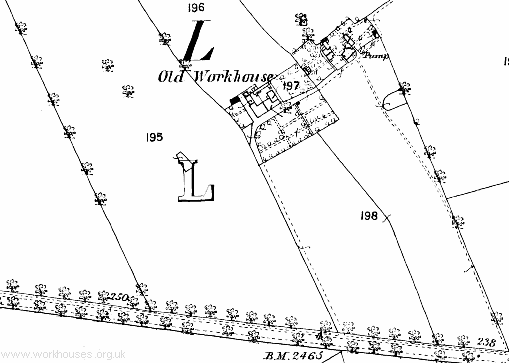
Trowell Moor workhouse site, 1881.
After 1834
The Basford Incorporation was, in principle, immune from the strictures of the 1834 Act. However, its Guardians were persuaded that the Incorporation should be dissolved and replaced by a new Poor Law Union. The Basford Poor Law Union formally came into being on 2nd May 1836. Its operation was overseen by an elected Board of Guardians, 46 in number, representing its 43 constituent parishes as listed below (figures in brackets indicate numbers of Guardians if more than one):
County of Nottingham:
Annesley and Felley, Arnold (2), Barton, Basford (2), Beeston, Bilborough, Bradmore, Bulwell, Bunny, Burton Joyce, Calverton, Carlton, Clifton with Glapton, Colwick, Cossall, Eastwood, Gedling, Gotham, Greasley (2), Hucknal Torkard, Kirkby in Ashfield, Lambley, Linby, Newstead, Nuthall, Papplewick, Ruddington, Selston, Stoke Bardolph, Strelley, Thrumpton, Trowell, West Bridgeford, Wilford, Wollaton, Woodborough.
County of Derby:
Codnor-cum-Loscoe, Codnor Park, Heanor, Ilkestone (2), Shipley.
Later Additions: Awsworth (from 1894), Bestwood Park (from 1877), Brinsley (from 1896), Kimberley (from 1896), Standard Hill (1862-97).
The population falling within the Union at the 1831 census had been 51,794 — with parishes ranging in size from Bradmore (population 35) to Basford itself (6,325). The average annual poor-rate expenditure for the period 1833-35 had been £13,745 or 5s.4d. per head.
Early in its existence, the Basford Union Board of Guardians was in dispute with the Poor Law Commissioners. In 1837, a serious slump in the framework knitting industry had led to large increase in poor relief applications. The Basford workhouse, which the Union had taken over from the old incorporation, had a capacity of 250 inmates soon became full. The Guardians therefore decided to continue providing out-relief to unemployed able-bodied, contrary to the provisions of the 1834 Act. However, the Commissioners stood firm and threatened that the Guardians would be personally liable for paying the costs of such relief. The Commissioners were also unhappy about a public subscription relief fund that had been started in Nottingham to which the Chairman of the Basford Guardians donated £100. The solution proposed by the Commissioners was to enlarge the workhouse to a point that would cope with all those whose distress was sufficient for them to seek admission.
The dispute dragged on unresolved for several years, with one Assistant Commissioner reporting that he had never been connected with a Union so difficult to manage as Basford. The Commissioners gradually made concessions in the distribution of out-relief, particularly in the winter. A labour test — the providing of relief only in return for the performing of work — was also sanctioned. However, the pressure for the Union to enlarge its workhouse was also continued. In 1840, an outbreak of smallpox in the workhouse resulted in an eminent Nottingham physician recommending the provision of separate accommodation for the sick. Eventually, in August 1840, the guardians advertised for a contractor to erect 'a chapel, and room adjoining, school room, board room etc.' The building work was completed in March 1843 at a cost of £2,000.
That was still not the end of the union's difficulties. In 1844, the Nottingham Review printed allegations of incompetence and corruption at the workhouse. Although proved to be unfounded, and probably the work of Chartist opponents of the New Poor Law, these accusations generated much bad publicity for the union. A much exaggerated version was even included by Engels in his 1845 work Conditions of the Working Class in England:
The original workhouse building was a two-storey U-shaped building with its entrance facing to the south-west. Additional wings and utility buildings were added to the north.
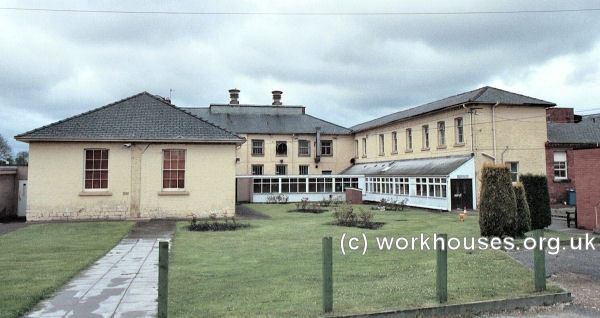
Basford main block from the north-east, 2001.
© Peter Higginbotham
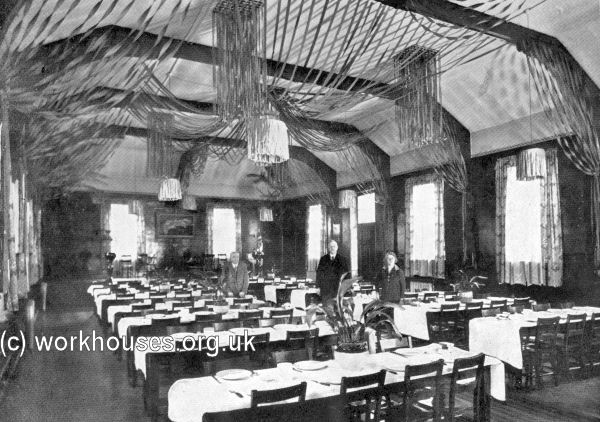
Basford workhouse dining hall from the north, c. 1930.
© Peter Higginbotham
A chapel-cum-boardroom building stood at the south of the site.
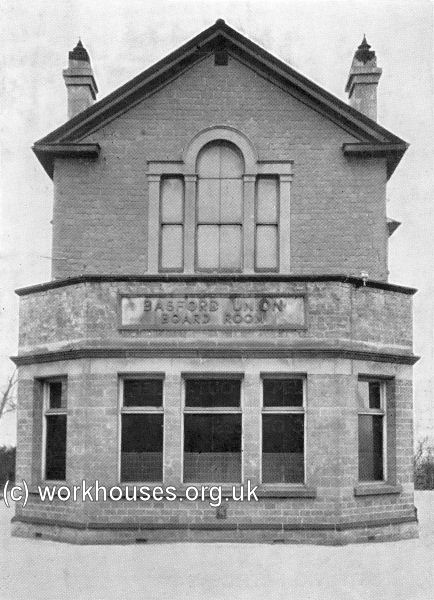
Basford chapel/boardroom from the north-east, c.1930.
© Peter Higginbotham
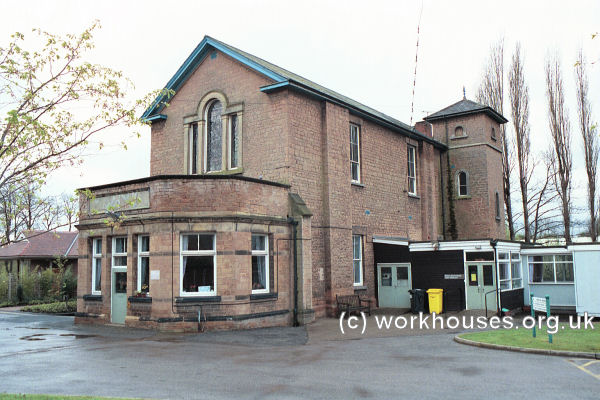
Basford chapel/boardroom from the north, 2001.
© Peter Higginbotham
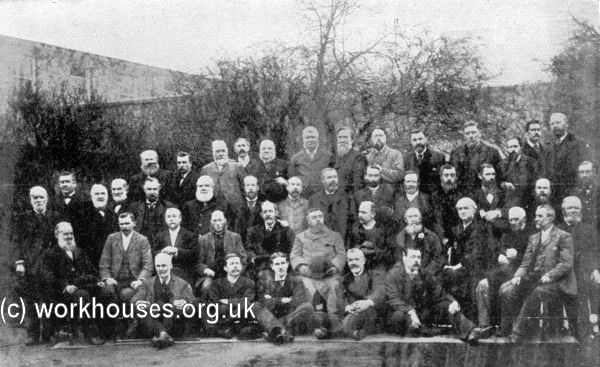
Basford Board of Guardians and Rural Sanitary Authority, 1894.
1
© Peter Higginbotham
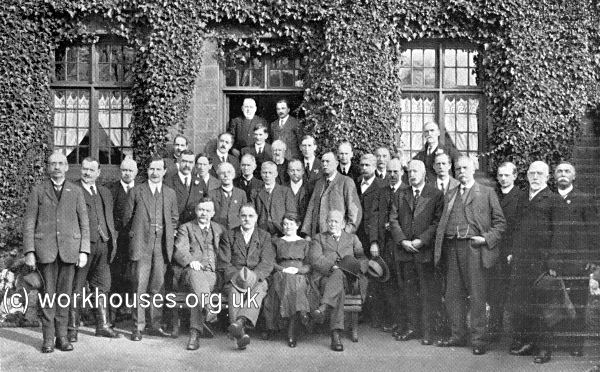
Basford Board of Guardians, 1918.
© Peter Higginbotham
For many years, the Guardians had offices at the corner of Nottingham Road and Zulu Road, Basford.
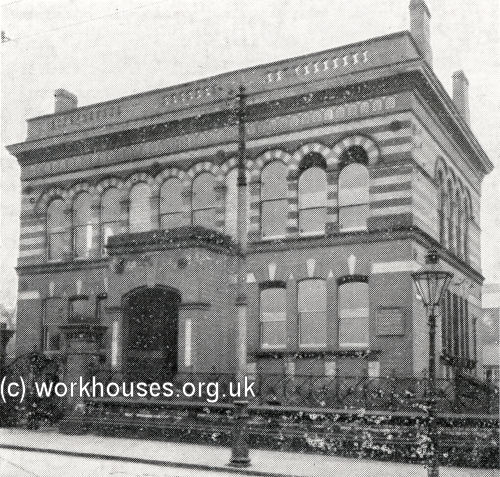
Basford Board of Guardians' offices, Nottingham Road, Basford.
© Peter Higginbotham
In 1922, after being unable to reach an agreement with the oners of the building, Nottingham Corporation, regarding a price for purchase or continued rental of the building, the guardians acquired new premises for the purpose at Rock House, Bagnall Road, Basford.
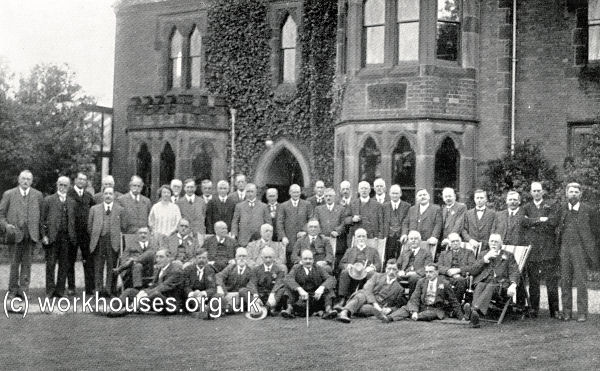
Basford Board of Guardians and Rural Sanitary Authority at Rock House, 1922.
© Peter Higginbotham
Medical facilities were extended in 1901 with the erection of an infirmary at the west of the workhouse. Designed by W.V. Betts, ut had a central entrance and administration block with male and female pavilions at each side.
The site layout in 1920 is shown below.
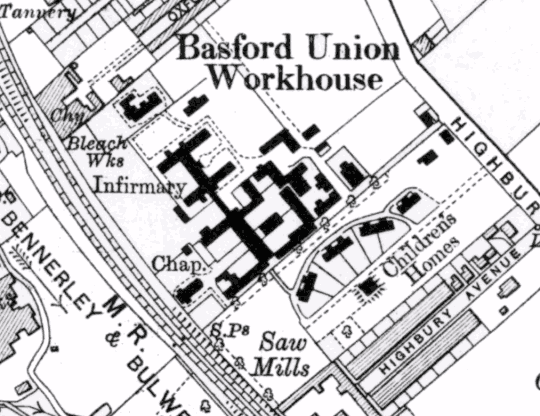
Basford workhouse site, 1920
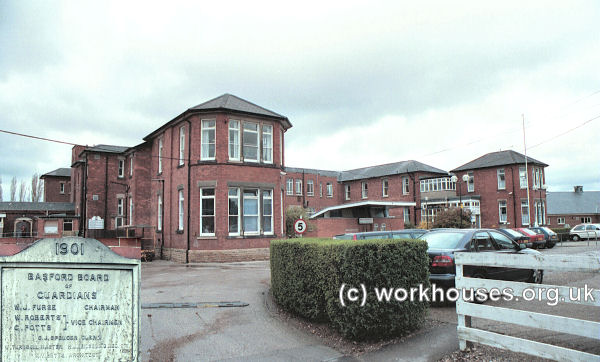
Basford former workhouse infirmary from the north-east, 2001.
© Peter Higginbotham
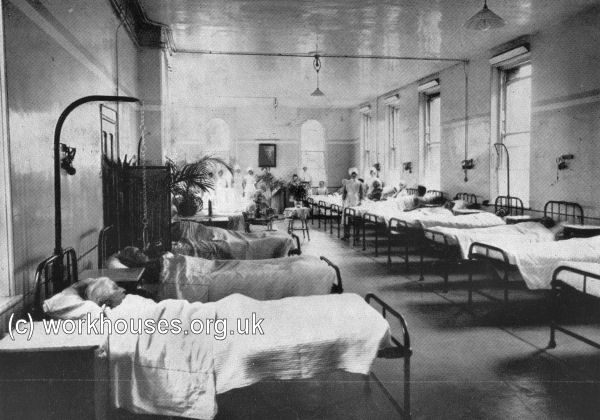
Basford workhouse infirmary, Furse ward, c.1930.
© Peter Higginbotham
After 1904, for birth registration purposes, the workhouse was identified as 100 Highbury Grove, Basford. The address of 121 Highbury Road was later adopted.
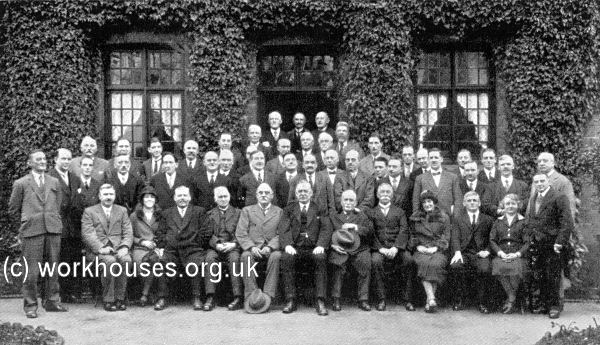
Basford Union's final Board of Guardians, 1930.
© Peter Higginbotham
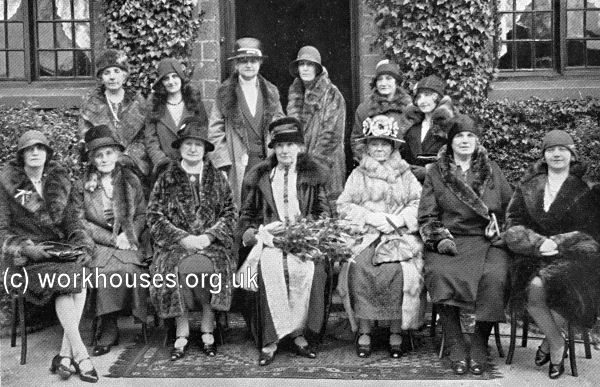
Basford Union Ladies' Workhouse Visiting Committee, 1930.
© Peter Higginbotham
The board of guardians was abolished in 1930 and Nottinghamshore County Council took over management of the site, which became known as Basford County Institution. After the inauguration of the National Health Service in 1948, it became Highbury Hospital. The workhouse and old infirmary buildings have virtually all now been demolished.
Cottage Homes
In 1913-14, a group of children's cottage homes was erected on an adajacent plot of land at the south-east of the workhouse, purchased from the Duke of Newcastle. The homes had their own entrance from Highbury Road and a separate address of 107-119 Highbury Road. The development, designed by H.T. Sudburycomprised three pairs of semi-detached houses, a probationary home for new arrivals, and recreation room. The seven homes, each under the supervision of a foster mother, were given the names of trees: Rose, Ash, Elm, Fir, Hazel, Lime and Oak.
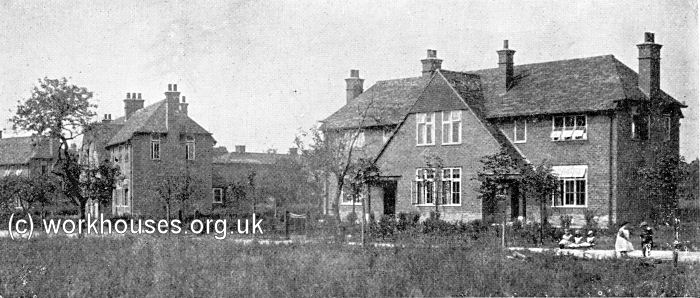
Basford Union cottage homes, c.1930.
© Peter Higginbotham
For a number of years, the boys at the homes had a band, which performed in uniform at events in the area. The children enjoyed occasional outings to local entertainments or beauty spots and an annual outing to Skegness. The picture below shows them on a visit to the home at Burton Joyce of the then guardians' vice-chairman, Mr J.G. Short.
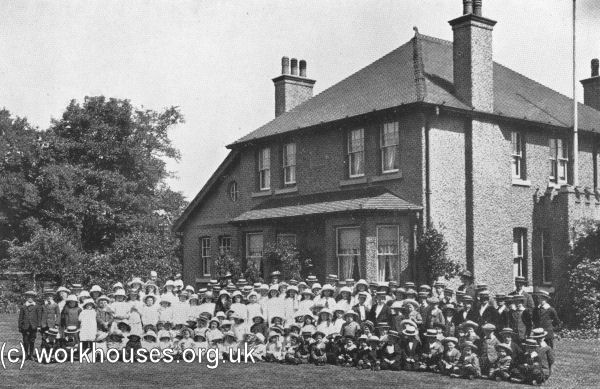
Basford Union cottage homes children at Burton Joyce, c.1929.
© Peter Higginbotham
Staff
- Masters and Matrons: Mr & Mrs William Turnbull (1884-1911); Mr & Mrs James Holloway (1911-30).
- 1881 Census
Inmates
Records
Note: many repositories impose a closure period of up to 100 years for records identifying individuals. Before travelling a long distance, always check that the records you want to consult will be available.
- Nottinghamshire Archives and Southwell Diocesan Record Office, County House, Castle Meadow Road, Nottingham NG2 1AG. Holdings include: Guardians' minute books (1836-1930); Admissions and discharges (1854-7); Outdoor relief lists (1900-30); Apprentices indentures and settlement (1845-1903); Register of children in workhouse (1900-30); etc.
- Manuscripts and Special Collections, The University of Nottingham, King's Meadow Campus, Lenton Lane, Nottingham NG7 2NR. Registers of the workhouse infirmary including: Admissions and Discharge Registers (1895-1950); Registers of persons of unsound mind (1914-1947); Registers of sick, maternity and mental patients; Registers of births (1871-1947); Registers of deaths (1871-1948); Delivery ward register (1916-1942).
Bibliography
- Caplan, Maurice In the Shadow of the Workhouse (1984).
- A Look at the Basford Workhouse by T Fry (in Notts FHS, 5, 11).
- Bland, Judy Forgotten People: Collected Memories Of Those Who Lived And Worked In Basford Workhouse and Highbury Hospital, Nottingham, Until the 1970s (2012).
Links
- The union's early correspondence with the central Poor Law authorities is online on the TNA website .
Unless otherwise indicated, this page () is copyright Peter Higginbotham. Contents may not be reproduced without permission.


